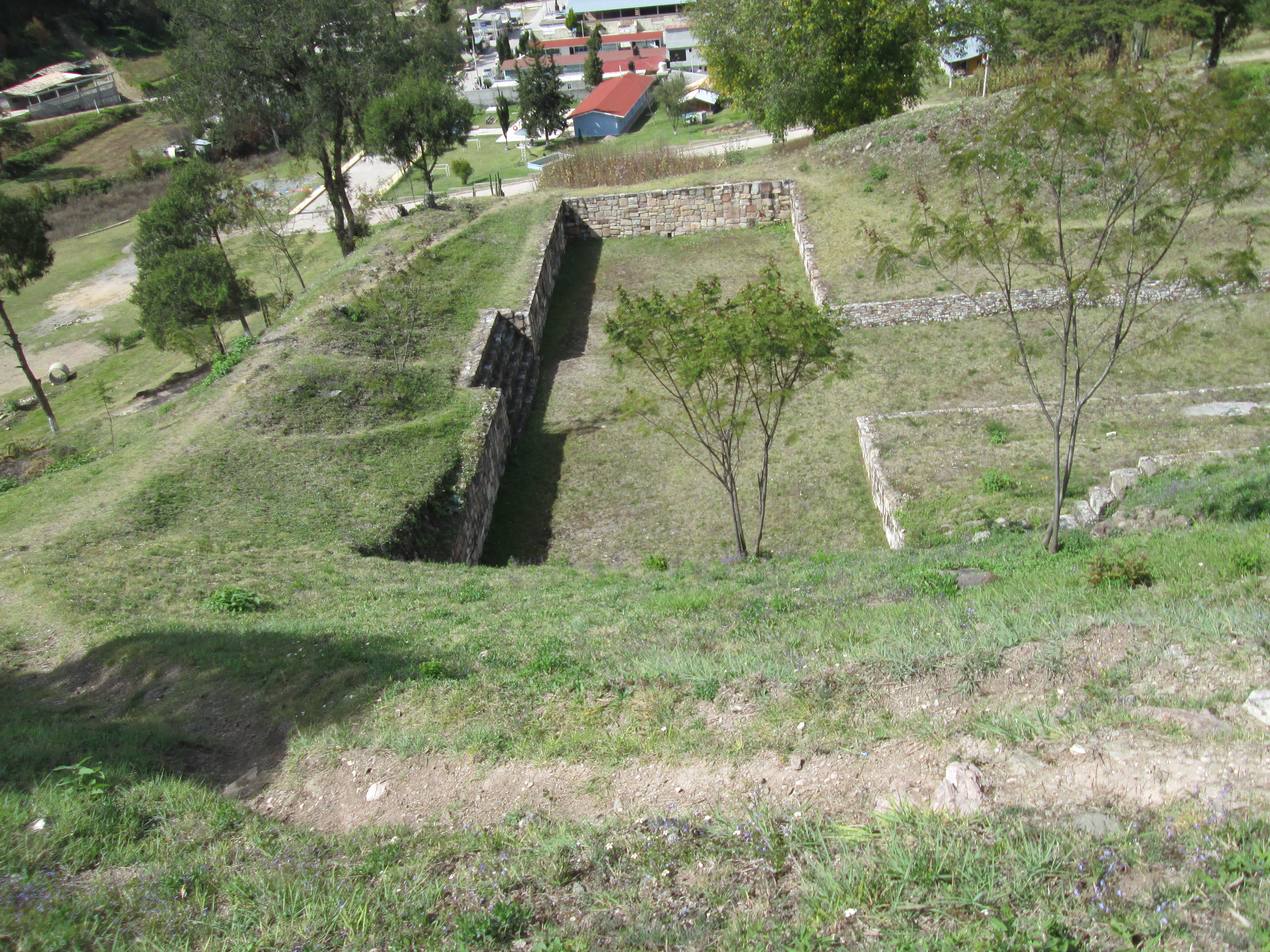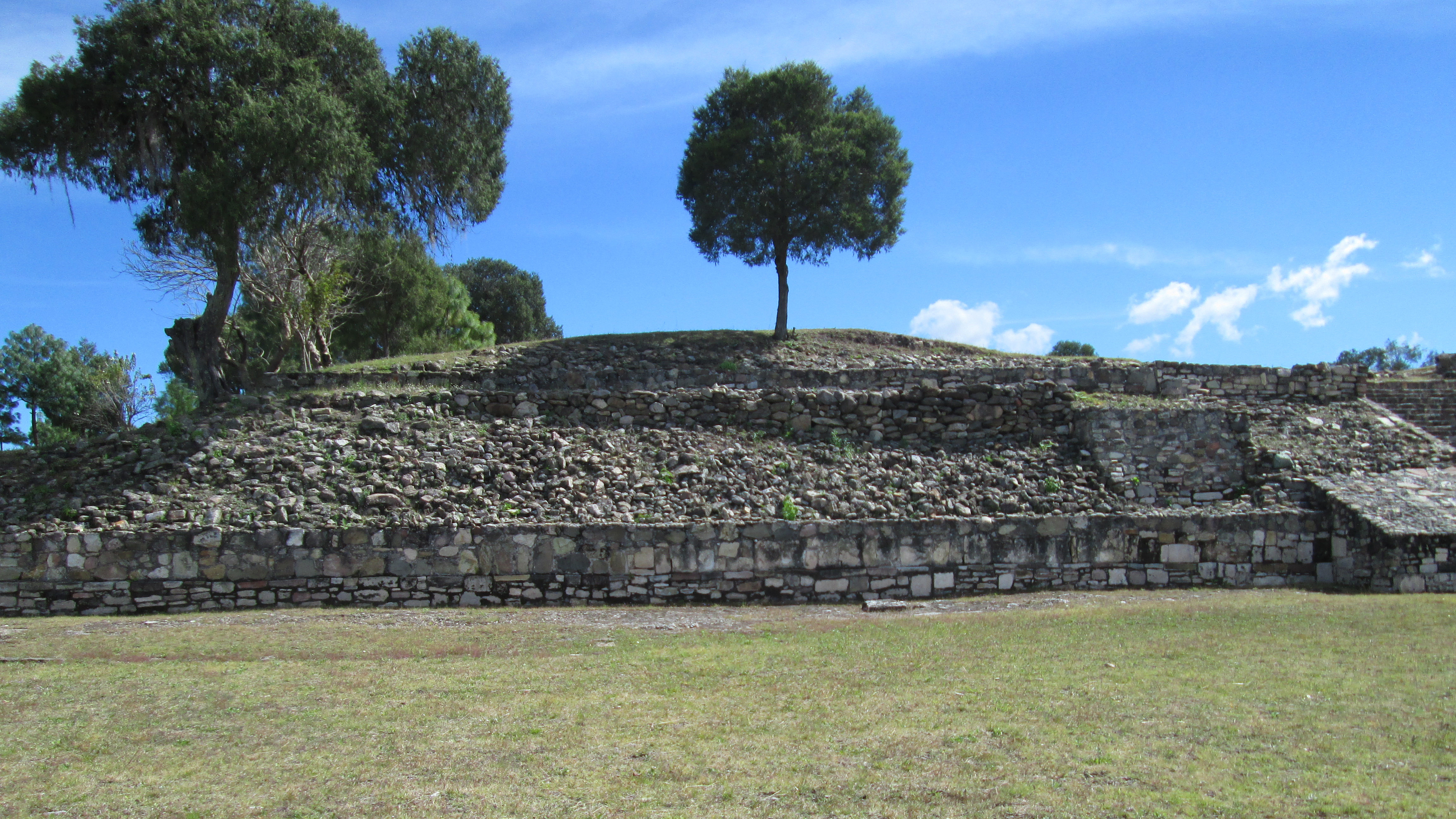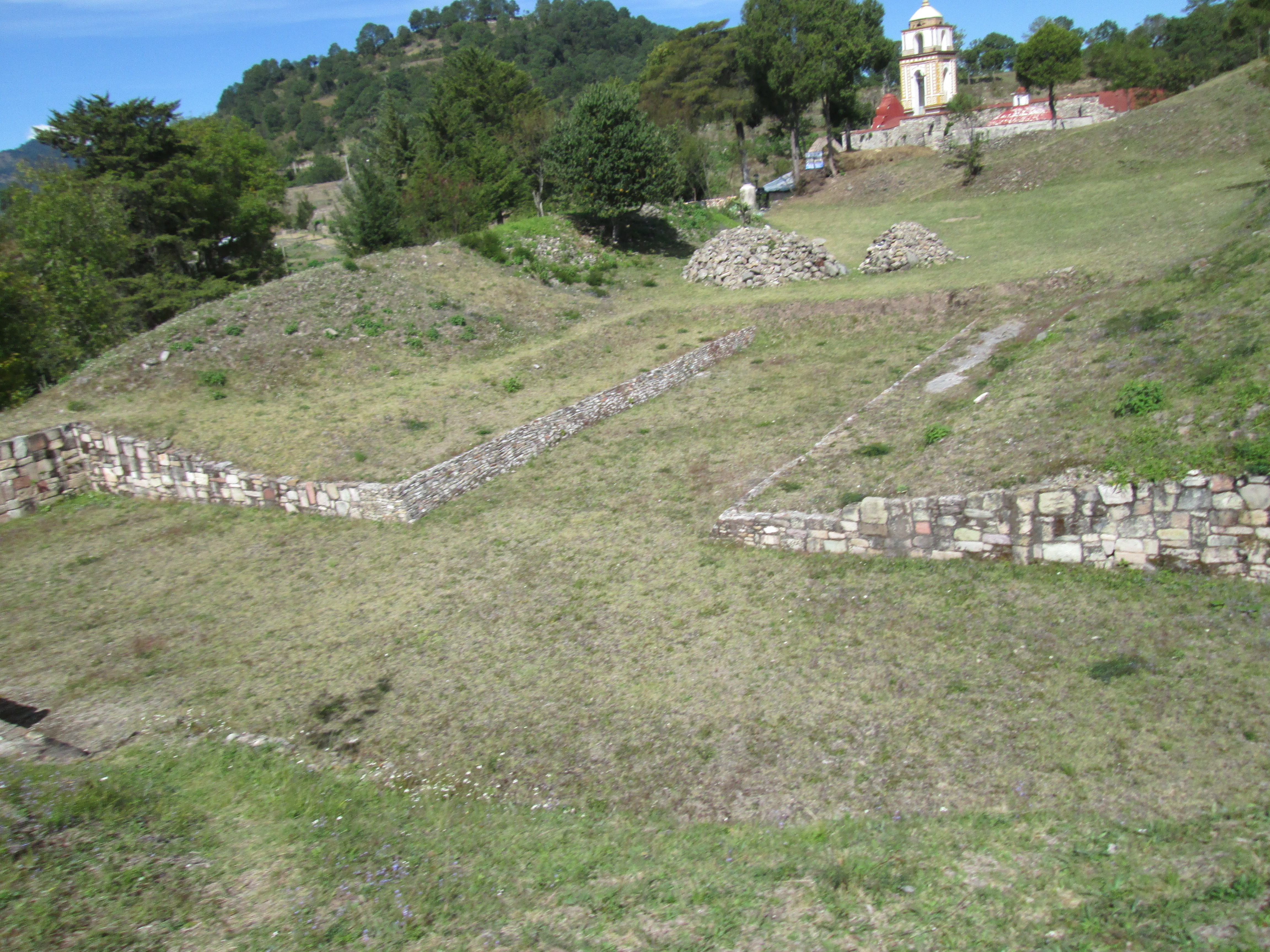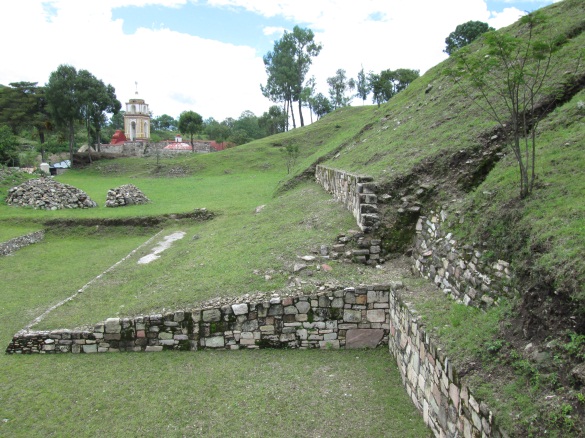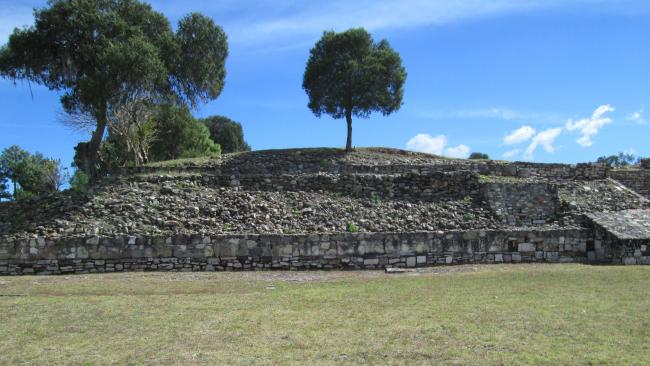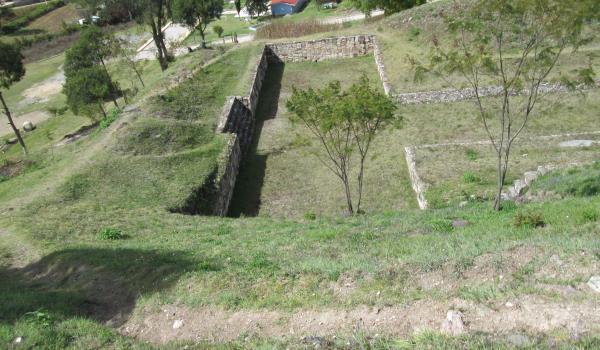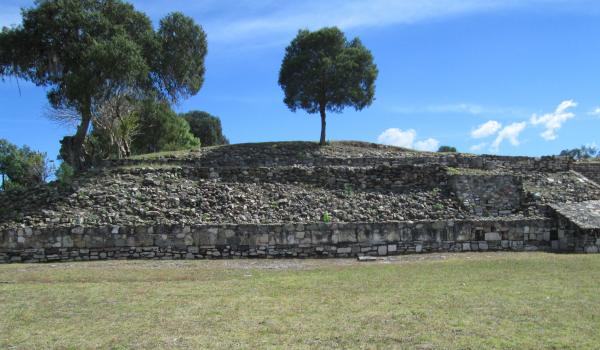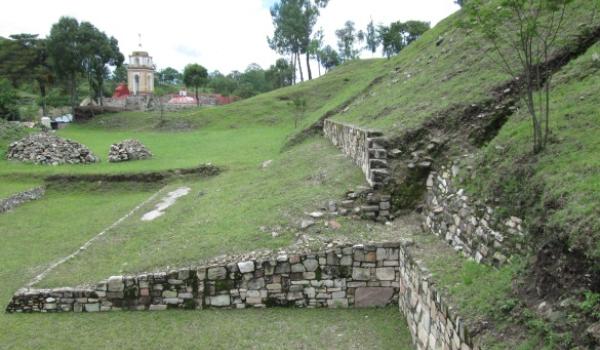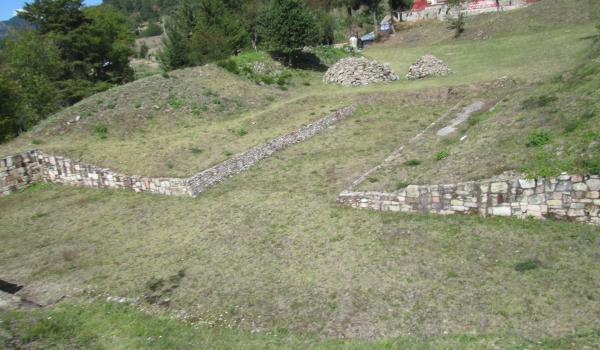Huamelulpan is notable for its monumental architecture and sculpture, as well as for its calendar inscriptions. It had three periods of occupation: Huamelulpan I from 400 to 100 BC; Huamelulpan II from 100 BC to 200 AD, a period that saw rapid population growth; and Huamelulpan III from 200 to 600 AD, a time of shrinking population, though new buildings were erected nevertheless. The city was built on a hilly area with terraces on the hillsides. It was organized into complexes of monumental architecture separated into three principal and two minor centers. These five centers are: the Cerro Volado Group, the Cemetery Group, the Old Church Group, the West of the Church and the Church Group. Since the many hills and ridges are the principal features of the environment, the array of constructions were adapted to this type of terrain, with a system of terraces for simple houses with stone foundations where the ordinary people lived, while the public and ceremonial areas were distinguished by their large stone platforms laid out in steps bordering open spaces. A ballcourt structure was found in the lower part, relating to a ritual that often culminated in human sacrifice. Enormous platforms were found in the southern part of the West of the Church Group, whose corners were reinforced with blocks of rectangular stone weighing several tons and bearing calendar signs very similar to the Zapotec writing system seen in Monte Alban.

